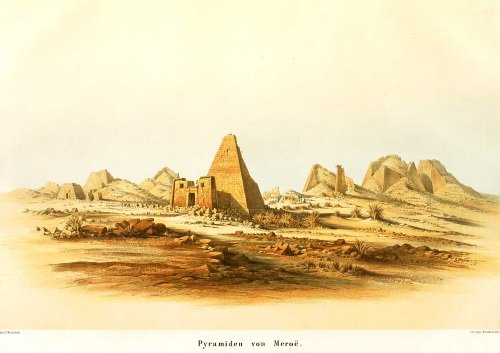Els Slots
How to visit the (T)WHS of Sudan
Sudan recently has gained some popularity as a destination for the more adventurous traveller. I know of three Dutch tour companies running scheduled group tours there, with at least two of them having guaranteed departures in the coming months. I will be leaving for Khartoum myself on one of them later this week. Below I want to share what I learned so far about visiting Sudan's (T)WHS.
WHS of Meroë and Gebel Barkal
Reaching the WHS of Meroë and Gebel Barkal is pretty easy, at least if you're prepared to throw some money at it. There's the costly visum to Sudan (90 EUR for a letter of invitation + 100 US dollar for the visum itself), and an array of permissions and entry fees have to be arranged and paid for. Both WHS lie in the "safeish" Nile region north of the capital Khartoum: nothing bad has ever happened to tourists there, but given Sudan's recent history it would not be a total surprise if something did.

The following companies are among those that offer group tours to Sudan: Italtour Sudan , Lendi Travel , Undiscovered Destinations , Wild Frontiers , Explore , B.C. Archaelogy , Koning Aap , Rosetta . Most of the international tour organizations use Italtour Sudan as their ground operator so you may as well book directly with them. Their Facebook page shows regular updates on their tours and lodgings. Individual travel seems doable too. According to the Bradt Travel Guide Sudan it's a breeze, with public transport running close to at least the main locations of both WHS. Reassuringly, on the issue of 'Safety' Bradt does include a chapter how to behave if you're kidnapped ("try to remain patient and optimistic").
Tentative Sites are a different story
Reaching the country's 6 TWHS really will give you an in-depth look at the country:
- Only Old Dongola (a deserted medieval village with Christian roots) seems to be on the beaten tourist track. This is probably because it lies in the same general area as Meroë en Gebel Barkal.
- Sanganeb National Park is the most promising among the TWHS. Its nomination was deemed "incomplete" in 2014, but at least that shows some activity. It's a marine park around a remote coral reef in the Red Sea. The area is popular with divers and is regularly visited .
- Dinder National Park unfortunately features in safety warnings by foreign advisories: "In 2012 Sudanese security forces raided a training camp of extremists in the Dinder National Park in south-east Sudan, near the border with Ethiopia." 1 People do visit however, look at this review and this post at the LP Thorn Tree . Dinder is a game park where much of the wildlife has been eaten long ago, but still some species survive.
- Suakin is a Red Sea port dating from the Middle Ages and Ottoman Times. According to Bradt, "Authorities don't seem keen on allowing foreigners to stay in Suakin". You can overnight though in nearby Port Sudan, and enjoy Suakin's ruins of the old town on a day trip.
- I haven't been able to find out much about Wadi Howar National Park . Part of the Sahara, it is one of the largest parks in the world. This video from a trip in 1983 shows what it looks like. Also, the University of Cologne seems to be doing archaeological research there.
- Finally, Kerma is an old town with mud brick temples. It lies in the far north of the Nubian desert, and is covered by some of the longer group tours listed above. Fellow WHS traveller Naim Yunus went there earlier this year. Read his trip report .
More on
Els SlotsComments
No comments yet.
